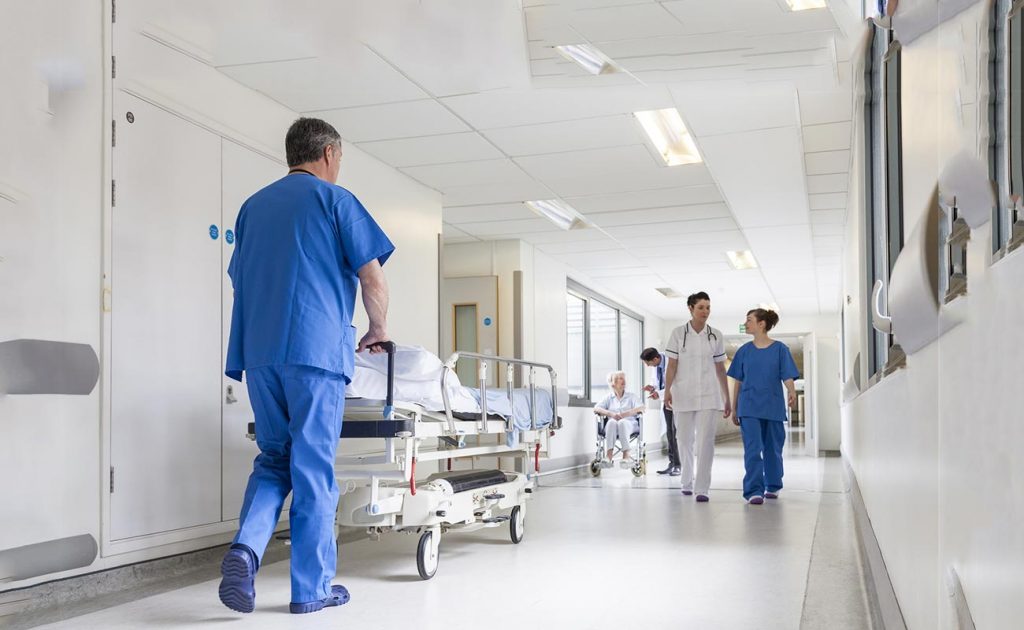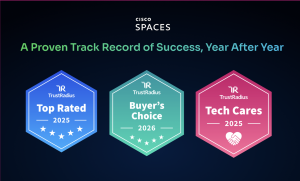
Today, the integration of technology into healthcare, specifically through the Internet of Things (IoT), is transforming the way we approach patient care. IoT in healthcare is a revolutionary shift that’s enhancing patient outcomes, streamlining hospital operations, and reducing costs. Let’s look at the technologies behind it, solutions currently available, and the benefits for both healthcare providers and patients.
What Is the Internet of Things (IoT) in Healthcare?
The Internet of Things (IoT) in healthcare refers to a network of interconnected medical devices, sensors, and software that collect, transmit, and analyze data in real time. These devices enable seamless communication between healthcare providers and systems, allowing for continuous monitoring and timely interventions. By leveraging this connectivity, IoT powers automation and data-driven decision-making, improving care delivery, enhancing patient outcomes, and optimizing workflows.
Key IoT Healthcare Technologies
Healthcare IoT is powered by a diverse set of connected technologies, seamlessly designed to collect, transmit, and manage real-time data across various care environments. These foundational components enable scalable and interoperable smart healthcare systems, laying the groundwork for advanced data-driven solutions in modern medicine.
RTLS Platforms & Tracking Tags
Real-Time Location Systems (RTLS) utilize technologies like Bluetooth Low Energy (BLE) tags, RFID, and Wi-Fi signals to continuously track the location of medical assets, equipment, and tagged patients within healthcare environments. BLE and RFID act as signal-emitting layers, transmitting location data, while RTLS platforms process these signals and convert them into actionable insights. This enables hospitals to monitor equipment usage, improve workflow efficiency, and enhance patient safety in real time.
Environmental Monitoring Sensors
Environmental monitoring sensors are designed to detect and transmit real-time data on conditions such as temperature, humidity, and air quality. In healthcare, these sensors are essential data sources for automated systems, ensuring the safe and efficient management of critical environments. This includes hospital rooms, pharmacies, storage areas for medications, and laboratories. Their continuous monitoring helps maintain compliance, reduce risks, and safeguard patient health.
Clinical Wearables & Remote Monitoring Devices
Clinical wearables are sensor-based devices that continuously collect patient health metrics such as heart rate, glucose levels, blood pressure, or movement patterns. These devices form a vital layer of IoT infrastructure by transmitting real-time biometric data to healthcare platforms. This enables remote monitoring, early detection of health issues, and personalized care interventions. Their integration enhances patient outcomes while reducing the need for frequent in-person visits.
IoT Gateways & Connectivity Infrastructure
IoT gateways are hardware or software solutions that bridge connected devices to cloud-based platforms, enabling secure data transmission and interoperability within IoT ecosystems. Industry solutions like Cisco’s Catalyst and Meraki access points function as IoT gateways, streamlining deployment by eliminating the need for external gateway hardware while ensuring scalable and reliable connectivity in healthcare IoT environments.
Use Cases of IoT Healthcare Solutions
Asset Tracking
BLE tags and sensors enable staff to quickly locate mobile medical equipment, such as IV pumps or wheelchairs, by providing real-time location data through connected tracking systems. This reduces the time spent searching for equipment, lowers costs by preventing unnecessary duplicate purchases, and improves operational efficiency. Ultimately, medical asset tracking optimizes resource utilization and enhances patient care delivery.
Environmental Monitoring
Environmental monitoring sensors ensure safe storage of medicines in pharmacies. They also ensure patient safety in care environments by continually tracking environmental parameters, to prevent deviations that could compromise safety. These sensors automatically trigger alerts when thresholds are breached, enabling staff to take corrective action promptly. This helps maintain compliance with stringent healthcare regulations and safeguards the integrity of sensitive drugs and patient environments.
Continuous Patient Monitoring & Safety
Wearables and sensors enable continuous real-time tracking of patient vitals, fall detection, and infant monitoring by capturing and transmitting critical health data to care teams. These devices improve care quality by allowing immediate detection of emergencies, ensuring faster response times, and reducing the risk of adverse events. Their integration into healthcare workflows promotes proactive and personalized patient safety measures.
Patient, Staff & Visitor Experience
After Wi-Fi onboarding, enabled through Captive Portals or OpenRoaming, real-time notifications can be sent to keep patients, staff, and visitors informed about important updates or events. This can be done via SMS, email, APIs, and push messages. Additionally, indoor wayfinding solutions help patients and visitors navigate the facility with ease by guiding them to various departments, nurse stations, and other key points of interest. This enhances their overall experience and reducing frustration. Combined, these technologies improve communication and accessibility within healthcare environments.
Space & Occupancy Analytics
Real-time and historical occupancy data enable facilities to optimize cleaning schedules, adjust layouts, and improve space utilization based on actual usage patterns. This data-driven approach enhances infection control by prioritizing high-traffic areas for cleaning, while also reducing wasted resources in areas of low footfalls. Additionally, it improves staff efficiency by aligning workflows with space demands, ensuring safer and more effective operations.
Benefits of Implementing IoT Devices in Healthcare Systems
The adoption of IoT devices in healthcare systems offers transformative benefits, both operational and clinical, improving efficiency and patient care. By integrating connected technologies, organizations can streamline workflows, enhance safety protocols, and deliver more personalized, data-driven treatment outcomes.
Improved Patient Outcomes
Access to real-time equipment and patient data enables healthcare providers to quickly locate necessary tools and monitor patient conditions. This greatly reduces treatment delays. Real-time insights support proactive care ultimately improving patient outcomes and overall care quality.
Operational Efficiency
Real-time location data streamlines critical processes by enabling quick retrieval of assets like medical equipment. Automating environmental checks ensures compliance, and space management can be optimized based on real-time usage. These efficiencies reduce staff workload, minimize delays, and ensure resources are utilized effectively. All of this ultimately improves operational workflows and patient care delivery.
Cost Reduction
IoT reduces wastage and loss of valuable medicines by monitoring environmental conditions in pharmacies. It also prevents excess spending by enabling real-time tracking of medical equipment, minimizing the risk of loss or misplacement. It also enables data-driven resource optimization, such as monitoring energy usage, preventing overstocking, and ensuring efficient allocation of staff and assets. These lead to significant cost savings.
Regulatory Compliance
Automated environmental and equipment monitoring also ensures adherence to health standards. This real-time data simplifies compliance reporting, supports audit-readiness, and reduces the risk of regulatory violations by providing accurate, time-stamped records for inspections and evaluations.
Staff Satisfaction & Safety
Easier access to equipment through IoT tracking reduces frustration and saves time, allowing staff to focus on patient care. Environmental monitoring and staff duress alert systems create safer workplaces by proactively addressing hazards and ensuring immediate support during emergencies. This boosts morale and fosters a sense of security.
How Cisco Spaces Supports IoT in Healthcare
To reliably achieve these outcomes, healthcare organizations require an IoT platform that is secure, scalable, and easy to manage. Cisco Spaces empowers healthcare providers to seamlessly deploy and scale IoT solutions across their environments. It does this by leveraging existing Cisco network infrastructure, simplifying implementation while enhancing operational efficiency, compliance, and patient care.
Open BLE Framework
Cisco Spaces supports an open BLE (Bluetooth Low Energy) framework by integrating with a wide range of third-party BLE devices, eliminating the reliance on proprietary systems. This openness simplifies the deployment process, allowing healthcare organizations to easily incorporate diverse BLE solutions to track assets, enhance patient experiences, and improve operational efficiencies without extensive infrastructure modifications.
One-Click IoT Device Onboarding
With Cisco Spaces, IT teams can onboard BLE and IoT devices quickly and effortlessly through the intuitive dashboard, requiring minimal manual configuration. This streamlined process reduces setup time, ensures consistent device management, and allows healthcare organizations to scale their IoT deployments efficiently across their facilities.
Centralized Monitoring for All Devices
Cisco Spaces provides IT admins with a centralized dashboard to monitor the status, connectivity, and health of all IoT devices across multiple locations. This holistic view simplifies device management, enables quick detection and resolution of issues, and ensures consistent performance, improving operational oversight and reducing downtime across healthcare environments.
Seamless Integration with Existing Cisco Infrastructure
Cisco Spaces seamlessly integrates with existing Cisco infrastructure (Catalyst and Meraki access points), without requiring any additional gateways for IoT sensors. This eliminates the need for extra hardware, allowing healthcare organizations to maximize their current Cisco investments while simplifying IoT deployments and reducing operational complexity.
Extensive Partner Ecosystem for Healthcare IoT
Cisco Spaces integrates with over 50 pre-certified BLE and IoT vendors, offering healthcare organizations a broad selection of devices for asset tracking, environmental monitoring, and staff safety. This flexibility enables faster deployments while preventing vendor lock-in, empowering organizations to select the solutions that best fit their needs.
Transform Healthcare Facilities with Cisco Spaces
Cisco Spaces empowers healthcare facilities by leveraging advanced IoT technologies to enhance patient care, operational efficiency, and safety. With capabilities such as seamless Wi-Fi onboarding for patients, real-time tracking of critical medical equipment, and automated environmental monitoring, healthcare teams can create smarter, more responsive environments. Tailored for the unique demands of healthcare, Cisco Spaces integrates seamlessly with existing Cisco infrastructure, offering a scalable and secure platform that supports asset tracking, environmental monitoring, and compliance with sensitive drug and vaccine storage requirements.
By providing existing network infrastructure-friendly solutions, Cisco Spaces helps IT teams improve network security, automatically locate assets, and detect rogue devices effortlessly. Nurses, facilities teams, and administrators benefit from streamlined workflows, optimized operations, and improved patient outcomes — all while avoiding vendor lock-in through its extensive partner ecosystem.
Visit the Cisco Spaces Experience Center to see how healthcare teams can benefit from Cisco Spaces.


